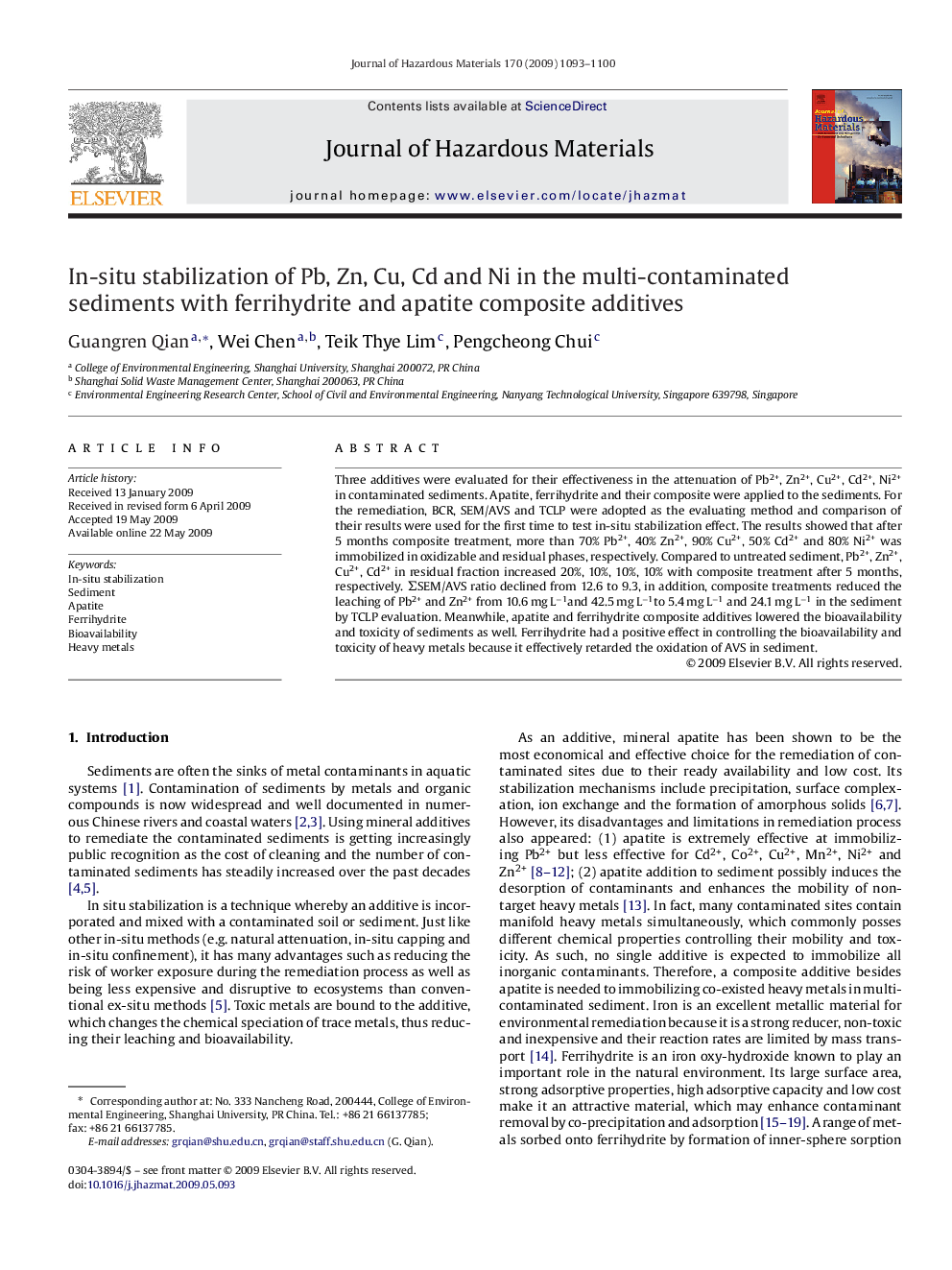| Article ID | Journal | Published Year | Pages | File Type |
|---|---|---|---|---|
| 581276 | Journal of Hazardous Materials | 2009 | 8 Pages |
Abstract
Three additives were evaluated for their effectiveness in the attenuation of Pb2+, Zn2+, Cu2+, Cd2+, Ni2+ in contaminated sediments. Apatite, ferrihydrite and their composite were applied to the sediments. For the remediation, BCR, SEM/AVS and TCLP were adopted as the evaluating method and comparison of their results were used for the first time to test in-situ stabilization effect. The results showed that after 5 months composite treatment, more than 70% Pb2+, 40% Zn2+, 90% Cu2+, 50% Cd2+ and 80% Ni2+ was immobilized in oxidizable and residual phases, respectively. Compared to untreated sediment, Pb2+, Zn2+, Cu2+, Cd2+ in residual fraction increased 20%, 10%, 10%, 10% with composite treatment after 5 months, respectively. ΣSEM/AVS ratio declined from 12.6 to 9.3, in addition, composite treatments reduced the leaching of Pb2+ and Zn2+ from 10.6 mg Lâ1and 42.5 mg Lâ1to 5.4 mg Lâ1 and 24.1 mg Lâ1 in the sediment by TCLP evaluation. Meanwhile, apatite and ferrihydrite composite additives lowered the bioavailability and toxicity of sediments as well. Ferrihydrite had a positive effect in controlling the bioavailability and toxicity of heavy metals because it effectively retarded the oxidation of AVS in sediment.
Related Topics
Physical Sciences and Engineering
Chemical Engineering
Chemical Health and Safety
Authors
Guangren Qian, Wei Chen, Teik Thye Lim, Pengcheong Chui,
